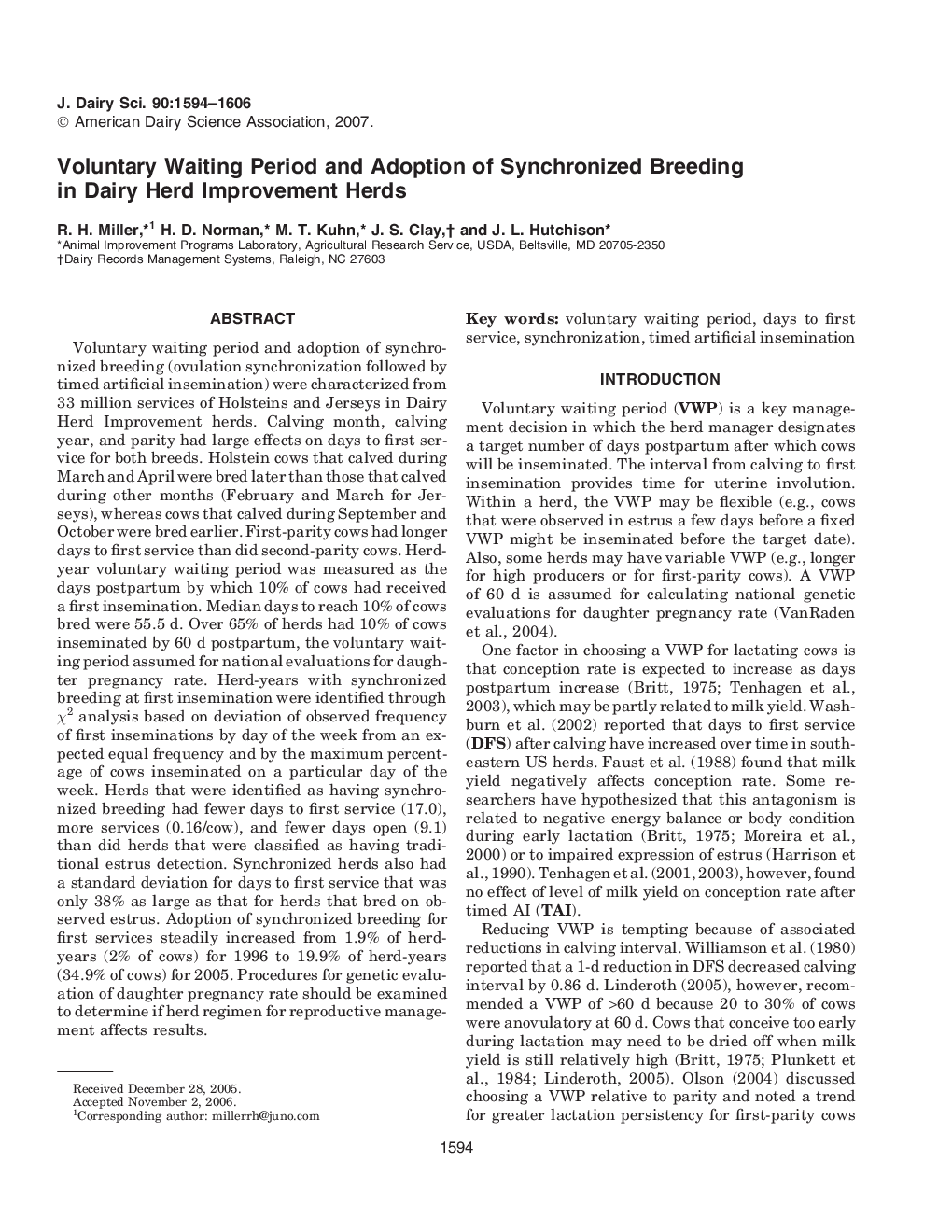| کد مقاله | کد نشریه | سال انتشار | مقاله انگلیسی | نسخه تمام متن |
|---|---|---|---|---|
| 2440767 | 1108125 | 2007 | 13 صفحه PDF | دانلود رایگان |

Voluntary waiting period and adoption of synchronized breeding (ovulation synchronization followed by timed artificial insemination) were characterized from 33 million services of Holsteins and Jerseys in Dairy Herd Improvement herds. Calving month, calving year, and parity had large effects on days to first service for both breeds. Holstein cows that calved during March and April were bred later than those that calved during other months (February and March for Jerseys), whereas cows that calved during September and October were bred earlier. First-parity cows had longer days to first service than did second-parity cows. Herd-year voluntary waiting period was measured as the days postpartum by which 10% of cows had received a first insemination. Median days to reach 10% of cows bred were 55.5 d. Over 65% of herds had 10% of cows inseminated by 60 d postpartum, the voluntary waiting period assumed for national evaluations for daughter pregnancy rate. Herd-years with synchronized breeding at first insemination were identified through χ2 analysis based on deviation of observed frequency of first inseminations by day of the week from an expected equal frequency and by the maximum percentage of cows inseminated on a particular day of the week. Herds that were identified as having synchronized breeding had fewer days to first service (17.0), more services (0.16/cow), and fewer days open (9.1) than did herds that were classified as having traditional estrus detection. Synchronized herds also had a standard deviation for days to first service that was only 38% as large as that for herds that bred on observed estrus. Adoption of synchronized breeding for first services steadily increased from 1.9% of herd-years (2% of cows) for 1996 to 19.9% of herd-years (34.9% of cows) for 2005. Procedures for genetic evaluation of daughter pregnancy rate should be examined to determine if herd regimen for reproductive management affects results.
Journal: Journal of Dairy Science - Volume 90, Issue 3, March 2007, Pages 1594–1606